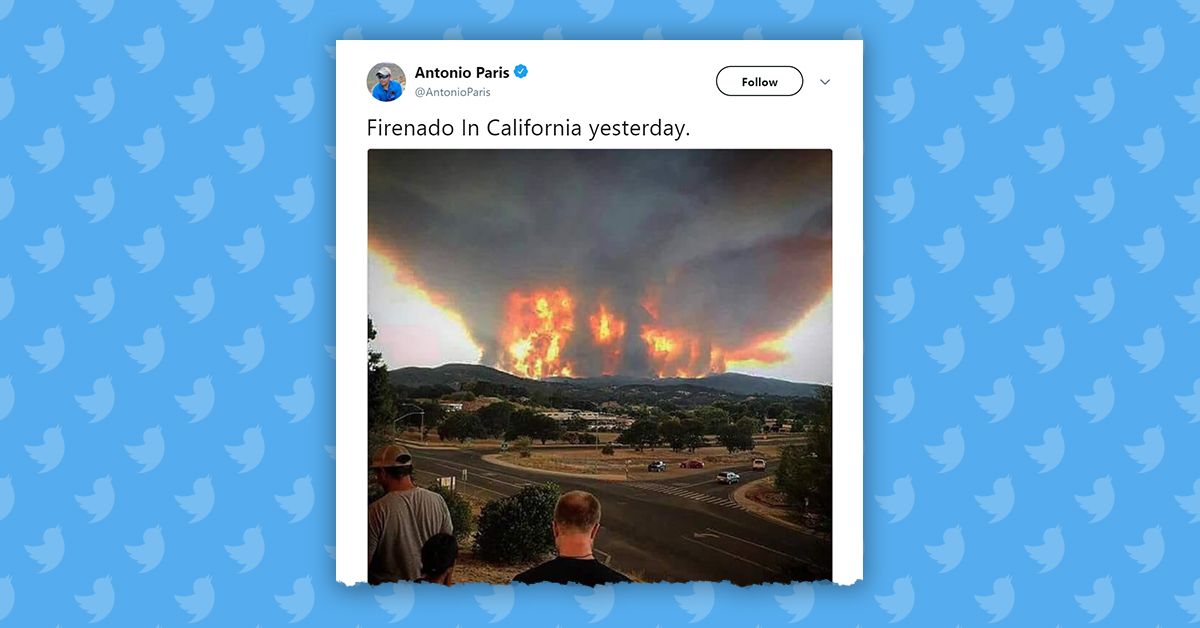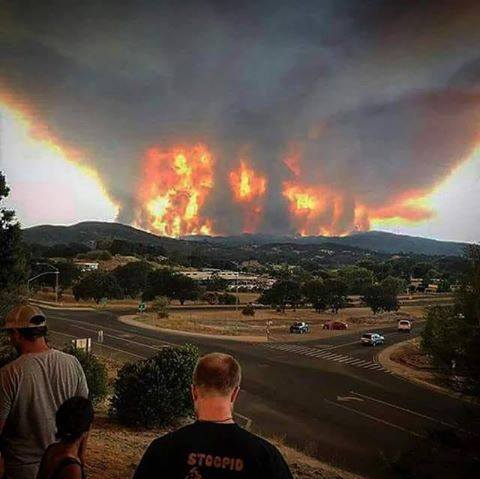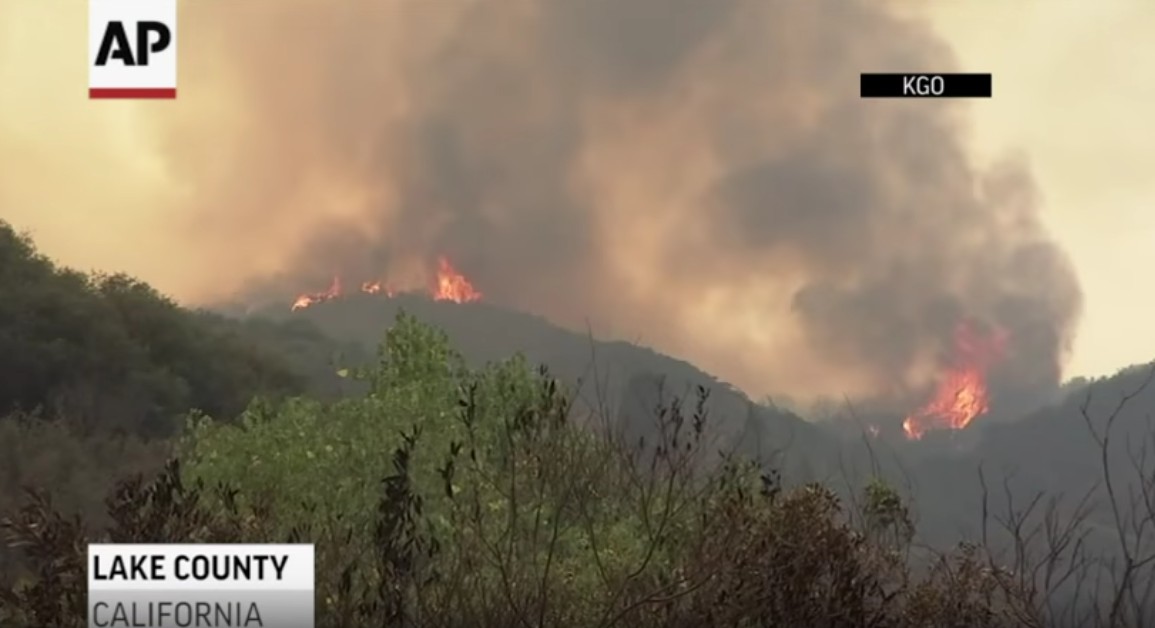Fake and misleading photographs are often shared during natural disasters. Some of these images are deliberately manipulated in order to fool viewers, while others are simply miscaptioned or misinterpreted. The latter appeared to be the case in August 2018 when an photograph purportedly showing a massive wildfire in California started making its way around online:
We're uncertain who took this photograph. It was apparently first posted online by Twitter user Antonio Paris, who shared it on 4 August 2018 along with a caption stating that it showed a "Firenado in California yesterday."
This image may have truly been taken in California, but we can't spot a firenado in this photograph. We've reached out to Paris for more information.
A "firenado," also referred to as a fire tornado or a fire whirl, is a relatively rare event. Weather Optics offered the following explanation for how these destructive flaming twisters are formed:
These form when hot air from the fire rises, creating vertical columns, until it cools and becomes less dense as the air increases in altitude. As more air gets wrapped into this column, the suspended air begins to spin in a vortex. These “firenados” are just like dust devils but with added burning embers, ash, and malleable debris. This makes them very dangerous, as they act like a spinning tower of flames.
Although this viral image likely doesn't show a firenado, one such fiery storm truly was caught on camera during the massive Carr Fire in Northern California. The Los Angeles Times reported that a large firenado with 143-mph winds struck near Redding, California on the evening of 26 July 2018:
This was not typical wildfire damage. Rather, it was strong evidence of a giant, powerful spinning vortex that accompanied the Carr fire on July 26. The tornado-like condition, lasting an hour and a half and fueled by extreme heat and intensely dry brush as California heats up to record levels, was captured in dramatic videos that have come to symbolize the destructive power of what is now California’s sixth-most destructive fire.
It may take years before scientists come to a consensus on what to exactly call this vortex — a fire whirl, as named by the National Weather Service, or a fire tornado. Whatever it’s called, it’s exceptionally rare to see a well-documented fire-fueled vortex leap out of a wildfire and enter a populated area with such size, power and duration.
It’s believed to have lasted from 7 p.m. to 8:30 p.m. on July 26 and struck some of the hardest-hit neighborhoods in Redding.
This kind of fire twister has been documented before, but only a handful “at this sort of scale,” said Neil Lareau, assistant professor of atmospheric sciences at the University of Nevada, Reno, who was among those comfortable calling it a fire tornado. “You’re starting with a rare event to begin with, and for it to actually impact a populated area makes it even rarer.”
Here's a video of the firenado described in that article:
The viral wildfire image has also created in some viewers the impression that the flames at the Carr fire were shooting up into the sky hundreds of feet above the trees. Visual media captured by news organizations such as the Associated Press, however, show that this isn't the case:
Here's another image of the California wildfire from a distance:
Along with #SacramentoMetroFire Copter 1 so many helping to stop the #RanchFire #CalGuard #Calfire #Columbia_Helicopters #USFS and Private Contractors it’s an honor to fly with them. #MutualAid at its best! #OneFightOneGoal #SummerFires2018 #CAwx pic.twitter.com/YJZNqshuPd
— Metro Fire Air Ops (@MetroAirOps) August 5, 2018
That isn't to say that the viral picture was doctored, though. What viewers are seeing as "flames" in this photograph may actually be just sunlight bleeding through a large cloud of smoke.
This photograph may have truly been taken in California as a wildfire burned through more than 270,000 acres, but it doesn't appear to show a firenado, and the size of the flames looks to be exaggerated.



